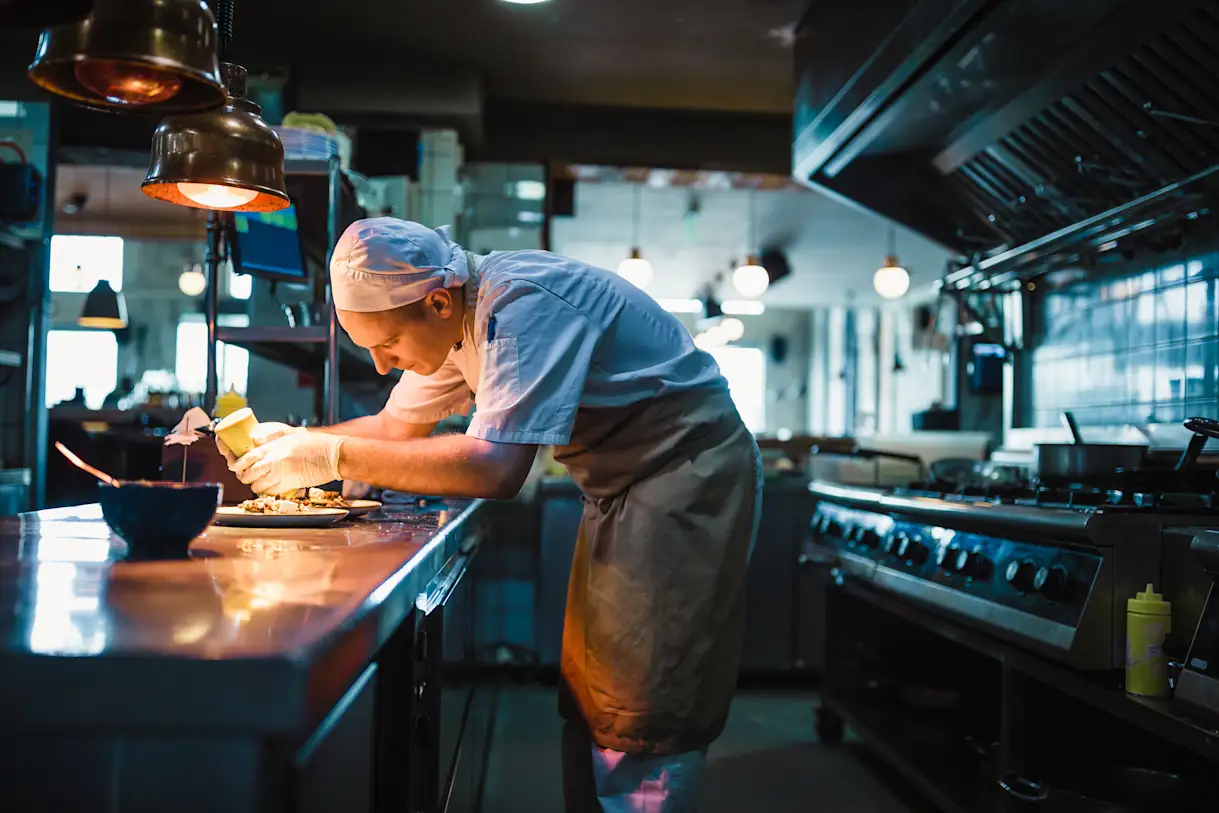Staffing
How to Hire Restaurant Staff & Utilize Staff With Limited Resources
Tips and best practices for hiring new employees and retaining valuable staff.
A restaurant’s staff is not just a collection of workers, it’s the restaurant’s power source. Without productive and empowered employees, a restaurant simply cannot succeed. When retained, engaged and well-trained, a restaurant’s staff ensures quality, consistency and a reliable guest experience – delivering delicious dishes and a high level of service time after time.
Unfortunately, the restaurant industry is facing a crisis of staffing as the world emerges from the impact of the pandemic. Many of those who worked in restaurants before 2020 have left the industry for different opportunities, and those who remain are expecting higher wages, benefits and opportunities for growth from their employers.
Even before the pandemic, restaurants could be notoriously difficult to staff. For years, the number of teens seeking work in restaurants has been diminishing, while the overall volatility of the hospitality workforce has resulted in an average tenure of just one month and 27 days.
To counter this trend, smart restaurateurs focus on effective staffing by proactively hiring and sourcing candidates who are experienced and dependable – which this article will explain how to do step-by-step.
Additionally, given the industry-wide staffing shortage, restaurants need to be able to make the most of the staff that they have on hand without overwhelming them. This article will speak to concrete ways shift managers can keep employees feeling fulfilled and productive, even when the business is short-staffed.

RESOURCE
Restaurant Employee Handbook Template
Improve staff retention and centralize key information with an employee handbook for your restaurant. Grab this free template!
How to Hire Restaurant Staff
1. Write a Job Description
To increase the likelihood of a qualified candidate moving through the pipeline (and ideally accepting an offer), the job description for each role in a restaurant must be accurate to the position. The clearer the role description can be, the more likely the candidate and hiring manager will be on the same page, which could reduce the chances of a rejected job offer or the employee leaving soon after starting.
For example, a server role description might specify:
How many tables the average server can expect to wait on at once in a given shift.
What side work is required in the role.
If known, which day/shift availability is needed.
Any necessary experience in a specific restaurant concept.
Additionally, restaurant job descriptions need to pitch the value of the opportunity to the candidate. Covering such aspects as the restaurant’s history, notable recognition it has seen and the benefits the role offers (more on that later) paints a vivid and enticing picture for potential applicants of what working in the restaurant will be like.
To get started, hiring managers can use sample templates (like this one for a restaurant manager) and customize it specifically for the role. It’s also worth looking at other job postings from restaurants in the area or of the same concept.

In the example above from Island Creek Oysters, the two-page job posting for Executive Chef leaves off very few details about the position. There’s a summary of the restaurant and role, lists of duties and requirements, an overview of benefits and application instructions – plus, welcoming language is used throughout with phrases like “upbeat, resilient personality” and “fostering a healthy and supportive work environment.”
2. Publish and Share the Job Posting
The practice of advertising a job in a newspaper isn’t as common as it once was, and placing a “Help Wanted” sign on the restaurant’s window is far from a guarantee of success in the hiring hunt. Fortunately, there are dozens of websites where eager restaurant employees keep their eyes open for their next gig. They include:
Restaurants can also post jobs on sites that are not industry-specific, such as Indeed, Craigslist or even Facebook. Additionally, some cities have their own region-specific job board – as an example, Boston Chefs lists out hundreds of open restaurant roles for the capital city of Massachusetts.
It’s important to remember that posting a role on a job board is not a one-and-done process. The more sites the role is shared on, the more likely applicants will be sourced faster. Craigie on Main exemplifies this fact, with interested candidates able to apply on a number of sites including LinkedIn and job.com.

It’s also a best practice to list any open roles on the business’s social media pages and on the restaurant’s website. That way, candidates looking to work at a specific restaurant can see what roles are available to apply to by visiting that restaurant’s page. One restaurant that recognizes this is New York’s Gramercy Tavern, which has a link to the site’s Careers page on the website footer. Gramercy’s careers page earnestly welcomes applicants with a call for “caring, warm, and intelligent people who love to serve and are among the best in their field” to join the team.

Finally, it’s worth tapping into existing employees’ networks of restaurant employees for referrals. A restaurant employee referral program not only sources candidates familiar with current staff members, but it also incentivizes employees to refer outstanding candidates and stick around to earn their referral bonus.
3. Host Interviews
Whether it’s an open interview for multiple candidates or a one-on-one for a specific individual, the interview is a mutually beneficial test for both the applicant and the hiring manager.
The hirer needs to convey the reasons why the candidate should choose the restaurant if offered the job, while the candidate needs to make their skills, capabilities and work ethic apparent.
Interviewers should ask situational and behavioral questions to an applicant. These questions highlight a candidate’s thought process and experience. Examples of these restaurant interview questions might include:
Can you tell me about a time when you made a mistake on the job and how you reacted?
What’s the most recent skill you’ve learned or behavior you’ve adopted on the job, and how did you learn it?
What was one customer interaction where you were able to truly delight your guest?
What’s a time where you had a conflict with a co-worker, and how were you able to resolve it?
How would you react if an ingredient was out of stock in the kitchen, but orders had already come in for a dish that required that ingredient?
These questions encourage more than just a one-sentence answer and challenge the candidate to be clear, concise and engaging – all of which are traits hospitality employees need in order to succeed in the industry.
During this time, interviewers should remember to be kind, professional and attentive. A candidate can easily be turned off by a future manager who interrupts or doesn’t make eye contact. Also, it’s best practice to leave time at the end of the interview for questions from the candidate about the position, the restaurant and the team’s culture.
4. Make a Competitive Offer
Once the ideal applicant is selected, the restaurant should alert that candidate as soon as possible with a phone call of the incoming formal offer. This is for two reasons:
1. To let the candidate know ASAP in case they’re entertaining multiple opportunities.
2. To open up discussions for negotiations before a final offer is made and come to an agreement on compensation and benefits.
Once everyone’s on the same page, the hiring manager should follow up with an offer letter and a deadline for accepting the job.
Now, it’s imperative to note that in order to increase the chances of an employee accepting the offer, the job offer must be competitive. First and foremost, that means competitive pay. The financial instability highlighted during the pandemic made it clear to hospitality workers how essential they are, yet how underpaid many continue to be. Restaurant chains like Chipotle and McDonald’s have accepted this conclusion and have committed to increasing wages as a result.
Unfortunately, not all independent restaurants have the ability to increase wages for everyone – especially newer restaurants trying to break even and keep menu prices low. If a candidate asks for a wage the restaurant is simply not able to offer, there are other avenues for making a competitive offer to work in the restaurant, including:
Implementing a percentage-based kitchen service fee passed on to customers that goes directly to back-of-house workers to combat wage disparity with their front-of-house colleagues.
Offering restaurant education opportunities or staff-led classes to allow employees to learn on the job, like restaurant Branch Line does.
Providing better benefits to employees like more time off and good health care.
Making employee advancement opportunities clear from the beginning so employees will know what roles await them (and what the pay may look like).
Covering the cost of high-quality equipment like knives, supportive shoes, or chef aprons from Tilit.
Good employees are worth the investment – with employee turnover costing the average restaurant around $150,000 each year. Higher pay may cost more in the short term, but knowing how important it is to attract and retain top talent, it can actually save a restaurant thousands of dollars annually. This should be kept in mind when extending an offer to a preferred candidate.
How to Utilize Staff When Resources Are Limited

With consumers showing they’re willing to pay more at restaurants as menu prices and restaurant wages rise, it’s only a matter of time before the industry adjusts and becomes an enticing place to work for more employees.
Until then, some restaurants continue to face limited resources when it comes to personnel. Here are some ways to make the most of a smaller restaurant staff and keep employees productive.
1. Cross-Train Employees
The concept of cross-training restaurant employees – or equipping workers to take on tasks outside of their core responsibilities – is not a recent revelation. For example, cashiers at a pizzeria might be expected to cut pizzas when they come out of the oven, clean tables in the front of the house or even restock chips and sodas when it’s not too busy.
For restaurants today, however, cross-training is more of a necessity than it is a “nice to have.” Certainly, no restaurant employee below the management level should be an expert on everything, but there are certain extensions to each position that could be done when the crew is down a member or two. Training servers on how to do the work of food runners or even bussers, for instance, can keep tables turning fast. These higher expectations, however, could mean the restaurant needs to pay staff more per shift.
2. Automate Where Possible
Restaurant technology has come a long way in the last decade, from guest-facing tech like online ordering to technology for managers like employee scheduling software. Although this technology is an investment, it quickly pays for itself by increasing the number of orders and freeing up employees to do other work. A few examples include:
Self-Ordering Kiosks, used by fast-casual restaurants like Panera to keep lines short and staff fewer counter workers.
Online Ordering, which means fewer people need to work the phones and lowers the chances of a mistake when an employee incorrectly enters an order. Bonus points if the software integrates with the restaurant’s POS, thereby saving even more time for employees who don’t have to re-enter orders themselves.
Handheld Ordering Tablets, used by servers to enter orders right at the table and save trips to and from the POS.
At-the-Table Pay, where guests can review and pay for their bill with a QR code, then quickly clear the way for more guests.
Back-of-House Technology like payroll, scheduling and inventory, which minimizes the manual work of managers and allows them to focus on other tasks and pitch in where needed on the floor.
These technologies fill in the gaps for a short-handed workforce to ensure staff members aren’t overwhelmed.
3. Maximize Productivity During Slower Hours
While plenty of cleanup and prep work occurs between the lunch and dinner rushes, there’s always room for improvement.
The more work that is done in these hours, the more ahead of things staff will be during peak times.
Refilling all condiment and napkin holders, organizing utensils and triple-checking that all back-of-house work stations are fully stocked should all be done in anticipation of a busy dinner shift. Setting and communicating these goals to staff through the use of checklists can maximize employee output even when guests aren’t visiting in droves.
4. Focus on Retention Efforts
Ultimately, a staff that is well-trained, feels valued and is experienced in the restaurant is more likely to make the most of a less-than-ideal situation (in this case, being down a set of hands). Getting employees to that point means they need to stick around, and for that to happen, restaurants need to focus on their employee retention efforts.
It bears repeating that not only does the restaurant industry see high turnover rates, but also that the cost of employee turnover in restaurants is estimated to be thousands of dollars per employee. The extra time spent hiring, training and retraining employees can be avoided with stronger retention efforts.
This ties back to the need for fair pay, clear growth opportunities and respectable benefits. Additionally, employee gamification and appreciation programs can also help keep staffing numbers strong.
Hiring, Engaging and Retaining Restaurant Staff
It all starts with a smart hire. Selecting the right candidates for open roles – and proactively souring the best applicants – helps a restaurant become (and stay) fully staffed and productive. From there, implementing processes and automation can ensure staff are best utilized, even when resources are limited.
One of the most direct ways to find the best new hires is to post about open roles on the restaurant’s website, which can be easily built and optimized with restaurant website design software BentoBox.
Click here to get started with a free demo of BentoBox’s restaurant website tool.

BentoBox Marketing & Commerce Platform
Want to stand out online? Let's chat.
Drive revenue directly through your website.
Recommended

Interview
Q&A with Jordan Boesch, Founder & CEO of 7shifts on Staffing for the Holidays
November 20, 2020
On some of the challenges that restaurants face and advice on optimizing staffing for the holiday season.

Interview
How to Keep Team Spirits Bright
December 14, 2016
The Meatball Shop’s tips for maintaining strong team spirits during the busy holiday season


